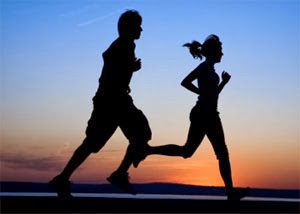The clubs Training Committee have been working away putting together a mentor programme for some races coming up in the near future. It's obvious that the immediate focus for most members will be the summer road races and the events in the Cork City Marathon.
With that in mind, the committee has put together a training programme for the Relay, Half-Marathon and full Marathon in the Cork City Marathon on the 3rd of June. The Half-Marathon programme can be used if you have another Half in mind like say Bandon and the Relay programme can be used if you just want to target other short races in the summer like the Ballycotton Summer Series.
Mentor Programme...
The role of the mentor and how the programme works is as follows...
- Contact mainly via e-mail
- Offer advice on what a realistic target time might be, how many miles per week you should be running, etc
- Offer advice on how to follow a particular training plan
- Monitor your progress and advise accordingly
- Encourage people of similar ability to train together particularly for track sessions, tempo runs, etc.
*****
Marathon...
Marathon...Novice Programme...Mentor (John Desmond)...This would be suitable for say anyone who has completed the Ballycotton 10 race or similar distance and is now planning to do their first Marathon. The plan is to get you around the 26.2 mile course in one piece, not to set a blistering fast time. The programme can be seen
HERE
Marathon...Intermediate Programme...Mentor (Grellan McGrath)...This one is suitable for anyone who has completed at least one Marathon and just wants to improve their time. The programme can be seen
HERE
Marathon...Advanced Programme...Mentor (John Quigley)...This is for those at the sharp end of things. If you have completed at least two Marathons and you feel like you are well beyond the 'beginner' stage then this might be the one for you. The programme can be seen
HERE
*****
Half-Marathon...
Half-Marathon...Novice Programme...Mentor (Colin O'Herlihy)...This would be suitable for anyone who has only done short races up to now and want's to do their first Half-Marathon. The programme can be seen
HERE
Half-Marathon...Intermediate Programme...Mentor (Elaine Guinane)...This is for anyone who has completed at least one Half-Marathon and wants to improve their time. The programme can be seen
HERE
Half-Marathon...Advanced Programme...Mentor (Joe Roche)...This advanced progamme is for experienced members who want to try for a personal best time. The programme can be seen
HERE
*****
Short Races...
Marathon Relay / Ballycotton Summer Series / 5 mile race...Novice Programme...Mentor (John Dunphy)...This is for those new members where the Half-Marathon or Marathon might seem like a distant dream. This is suitable for anyone who has just started or has completed a recent 'Couch to 5k' programme. The idea is to get you ready for some of the summer events. The programme can be seen
HERE
Marathon Relay / Ballycotton Summer Series / 5 mile race...Intermediate Programme...Mentor (Tim McCarthy)...This is anyone who has done a few short races and wants to sharpen up and improve their times. The programme can be seen
HERE
Marathon Relay / Ballycotton Summer Series / 5 mile race...Advanced Programme...Mentor (John O'Callaghan)...This is for the seasoned members who think they know it all! Take some advice from a man who finished in the top 100 in the 2013 Ballycotton 10 ;o) . The programme can be seen
HERE
*****
All of the training programmes are provisional and are liable to be changed by their respective mentors to suit our training sessions. To take part in any programme, Eagle AC members should contact the relevant mentor.
If you have any questions or are unsure about which programme to join then send John Desmond an e-mail. The e-mail address is shown on the right hand side of this page.
If there is any aspect of running that any member needs advice on then don't be afraid to ask. If there is one thing that we have as a club is a huge amount of experience. Look at the clubs mentor page and see who can help you..........
http://eagleactraining.blogspot.ie/p/mentors.html



















